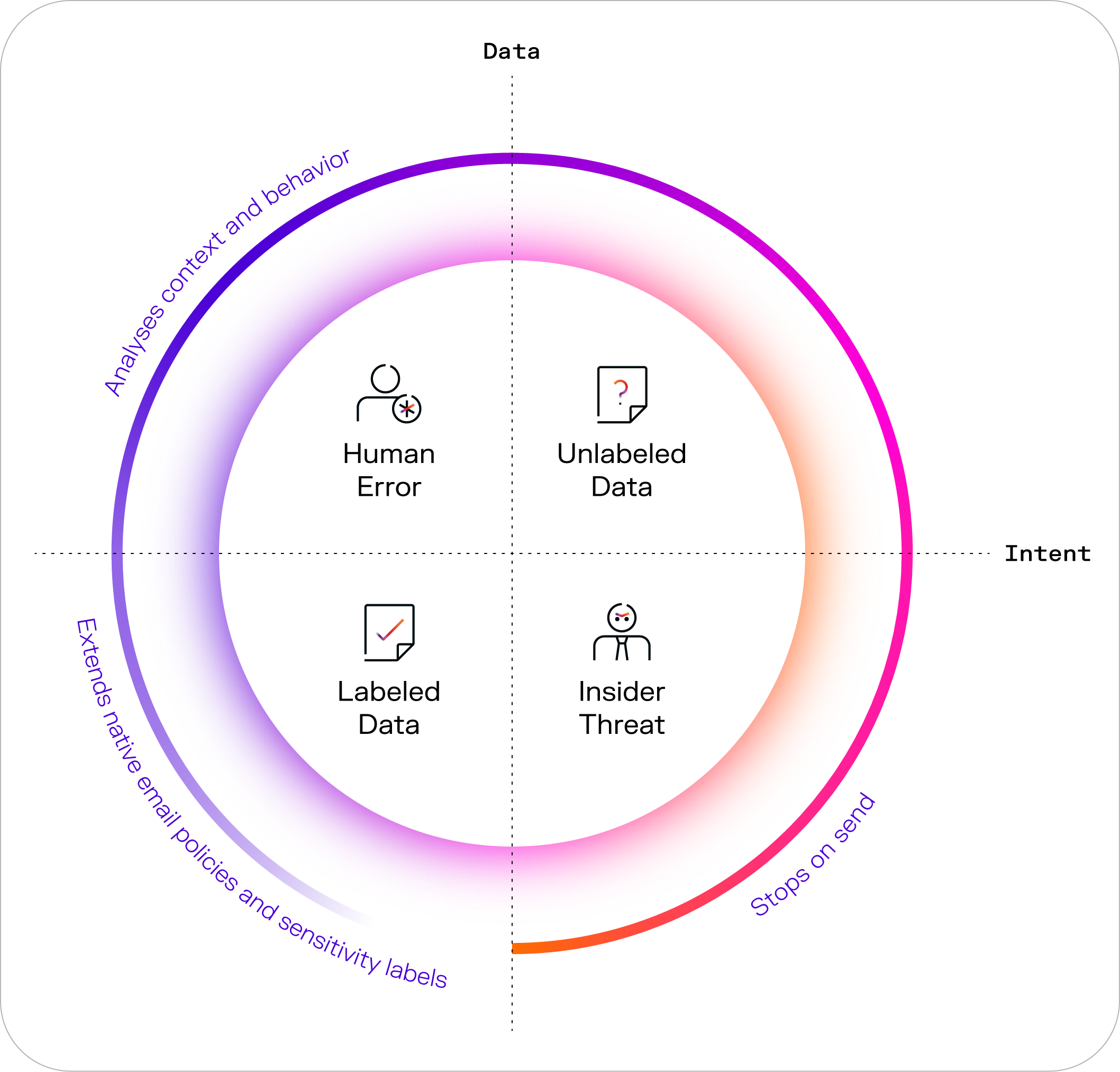Why today’s data is fundamentally difficult to protect
Data isn’t what it used to be. It’s no longer confined to neat rows in a database, or tucked away in a secure on-prem server. Today, sensitive information moves freely between cloud platforms, SaaS applications, endpoints, and a globally distributed workforce – often in real time. The sheer volume and diversity of modern data make it inherently harder to monitor, classify, and secure. And the numbers reflect this challenge – 63% of breaches stem from malicious insiders or human error.
This complexity is compounded by an outdated reliance on manual data management. While data classification remains critical – particularly to ensure compliance with regulations like GDPR or HIPAA – the burden of managing this data often falls on overstretched security teams. Security teams are expected to identify, label, and track data across sprawling ecosystems, which can be time-consuming and error-prone. Even with automation, rigid policies that depend on pre-defined data classification miss the mark.
From a data protection perspective, if manual or basic automated classification is the sole methodology for preventing data loss, critical data will likely slip through the cracks. Security teams are left scrambling to fill the gaps, facing compliance risks and increasing operational overhead. Over time, the hidden costs of these inefficiencies pile up, draining resources and reducing the effectiveness of your entire security posture.
What traditional data classification can’t cover
Data classification plays an important role in data loss prevention, but it's only half the puzzle. It’s designed to spot known patterns and apply labels, yet the most common causes of data breaches don’t follow rules. They stem from something far harder to define: human behavior.
When Darktrace began developing its data loss detection capabilities, the question wasn’t what data to protect — it was how to understand the people using it. The numbers pointed clearly to where AI could make the biggest difference: 22% of email data breaches stem directly from user error, while malicious insider threats remain the most expensive, costing organizations an average of $4.99 million per incident.
Data classification is blind to nuance – it can’t grasp intent, context, or the subtle red flags that often precede a breach. And no amount of labeling, policy, or training can fully account for the reality that humans make mistakes. These problems require a system that sees beyond the data itself — one that understands how it’s being used, by whom, and in what context. That’s why Darktrace leans into its core strength: detecting the subtle symptoms of data loss by interpreting human behavior, not just file labels.
Achieving autonomous data protection with behavioral AI
Rather than relying on manual processes to understand what’s important, Darktrace uses its industry-leading AI to learn how your organization uses data — and spot when something looks wrong.
Its understanding of business operations allows it to detect subtle anomalies around data movement for your use cases, whether that’s a misdirected email, an insecure cloud storage link, or suspicious activity from an insider. Crucially, this detection is entirely autonomous, with no need for predefined rules or static labels.

Darktrace / EMAIL’s DLP add-on continuously learns in real time, enabling:
- Automatic detection: Identifies risky data behavior to catch threats that traditional approaches miss – from human error to sophisticated insider threats.
- A dynamic range of actions: Darktrace always aims to avoid business disruption in its blocking actions, but this can be adjusted according to the unique risk appetite of each customer – taking the most appropriate response for that business from a whole scale of possibilities.
- Enhanced context: While Darktrace doesn’t require sensitivity data labeling, it integrates with Microsoft Purview to ingest sensitivity labels and enrich its understanding of the data – for even more accurate decision-making.
Beyond preventing data loss, Darktrace uses DLP activity to enhance its contextual understanding of the user itself. In other words, outbound activity can be a useful symptom in identifying a potential account compromise, or can be used to give context to that user’s inbound activity. Because Darktrace sees the whole picture of a user across their inbound, outbound, and lateral mail, as well as messaging (and into collaboration tools with Darktrace / IDENTITY), every interaction informs its continuous learning of normal.
With Darktrace, you can achieve dynamic data loss prevention for the most challenging human-related use cases – from accidental misdirected recipients to malicious insiders – that evade detection from manual classification. So don’t stand still on data protection – make the switch to autonomous, adaptive DLP that understands your business, data, and people.
[related-resource]
Interested in finding out more?
Read the full solution brief to see how Darktrace's AI-driven approach to DLP stops data loss across email and Teams
.avif)















.jpg)
.jpg)

